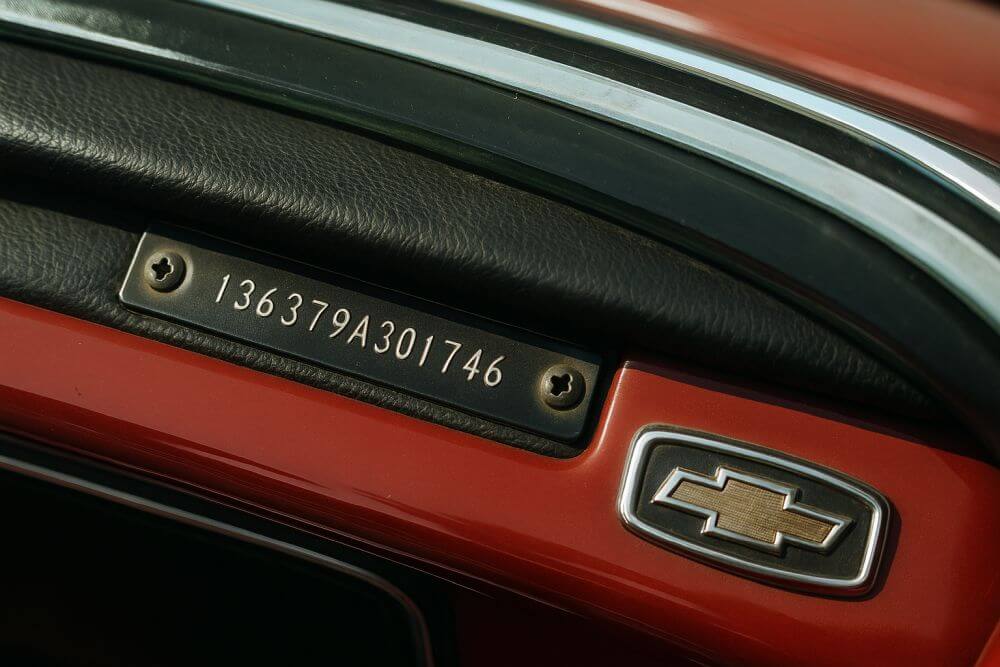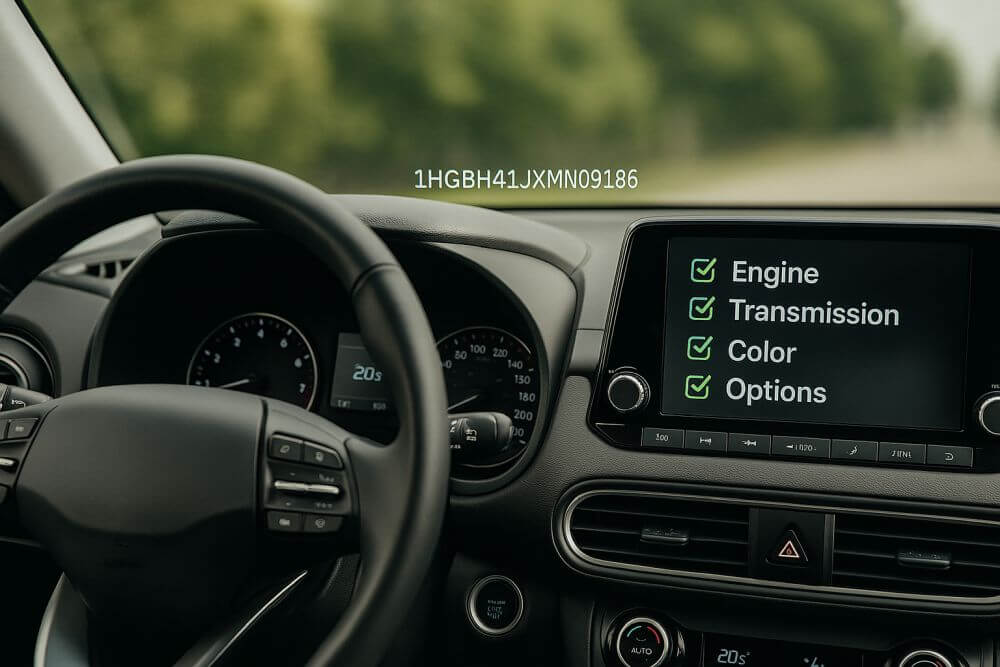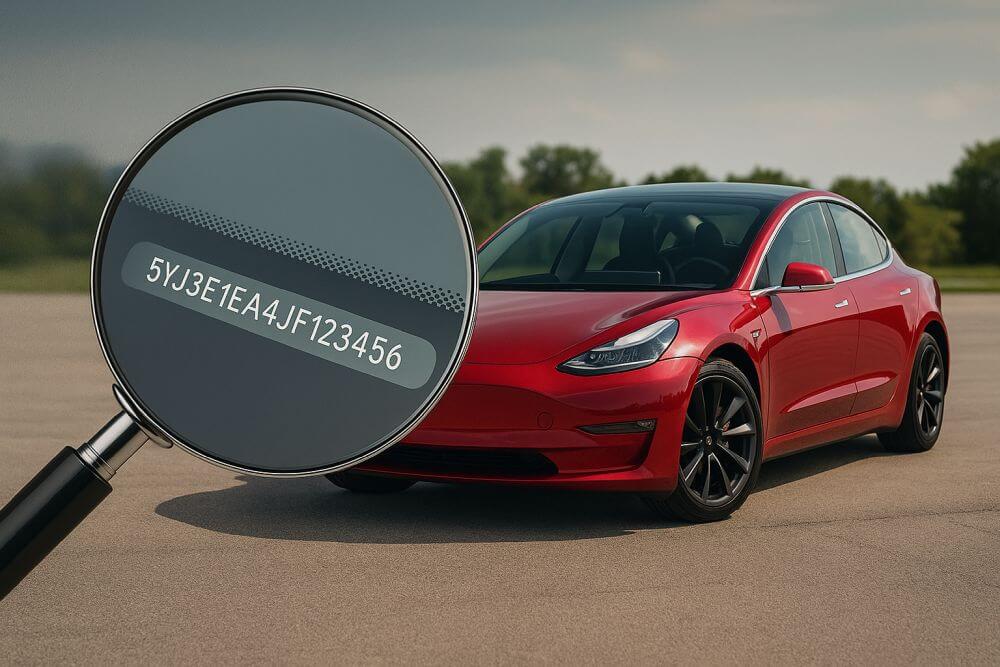If you’re buying, restoring, or researching a vintage vehicle, you’ve probably come across an old-school VIN that doesn’t look anything like the modern 17-character format. That’s because before 1981, automakers used shorter, brand-specific VIN systems—and those legacy formats can make decoding a classic car’s history more challenging.
So how do you decode a classic car VIN from 1965, 1970, or even the early ’80s?

In this guide, we’ll break down how to understand and decode pre-1981 VINs, what makes them different, and how to uncover a car’s original factory specifications, build plant, engine code, and model year—even if your VIN only has 11 or 13 characters.
Ready to crack the code on your vintage ride?
What Is a Classic Car VIN?
A Vehicle Identification Number (VIN) is a unique alphanumeric code assigned to each vehicle by the manufacturer. Today, every car sold in the U.S. uses a standardized 17-digit VIN. But prior to 1981, there were no federal regulations requiring VIN standardization.
This means:
- Older VINs can range from 5 to 13 characters
- Each automaker used its own VIN format and decoding logic
- Some VINs include engine codes, while others focus on trim or assembly
- Interpreting a vintage VIN usually requires make-specific knowledge
Because of these variations, decoding a classic car VIN isn’t as straightforward as plugging it into a modern decoder—unless you’re using a tool designed for older formats.
🔎 Use our Classic Car VIN Lookup tool to decode older formats with ease
Why Decode a Classic VIN?
Whether you’re a collector, buyer, seller, or restorer, understanding a classic car’s VIN gives you key insights:
- Confirm authenticity (e.g., matching-numbers vehicle vs. swapped parts)
- Determine the exact model and trim package
- Identify engine size, horsepower, or special options
- Track production plant and manufacturing date
- Research eligibility for classic registration or shows
- Spot clones or VIN fraud before you buy
Decoding the VIN helps uncover the vehicle’s factory-original identity, which is vital for historical records, restoration accuracy, and resale value.
VIN Length by Era and Manufacturer (Pre-1981)
| VIN Length | Timeframe | Notes |
|---|---|---|
| 5–7 digits | 1940s–1950s | Used by Ford, Chevy, Chrysler; often located on engine block or frame |
| 11 digits | 1960s–early ’70s | Common among GM, Ford, Chrysler; includes engine, model, year |
| 13 digits | Late ’70s | Transitional years just before the 17-digit standard |
| 17 digits | 1981–present | Universal format adopted by all U.S. automakers |
Even within the same manufacturer, VIN formats could vary by plant, model line, or year. That’s why decoding vintage VINs requires a reference source or lookup tool that knows what to expect by year and make.
What You Can Decode from a Classic VIN
Let’s walk through what kind of information you can extract from a typical pre-1981 VIN, depending on the manufacturer.
🔹 Chevrolet (1960s–1970s)
Example VIN: 113276W204538
| Digit(s) | Meaning |
|---|---|
| 1 | GM Division (1 = Chevrolet) |
| 13 | Series and Trim (13 = Chevy Nova 4-cylinder) |
| 27 | Body Style (27 = 2-door coupe) |
| 6 | Model Year (6 = 1966) |
| W | Assembly Plant (W = Willow Run, MI) |
| 204538 | Production Serial Number |
From this VIN, you know it’s a 1966 Chevy Nova 2-door coupe, built in Michigan, with a base engine.
🔹 Ford (1960s–1970s)
Example VIN: 1F02R135789
| Digit(s) | Meaning |
|---|---|
| 1 | Model Year (1 = 1971) |
| F | Assembly Plant (F = Dearborn, MI) |
| 02 | Body Code (02 = Mustang Fastback) |
| R | Engine Code (R = 428 Cobra Jet) |
| 135789 | Sequential Production Number |
You’ve just identified a 1971 Mustang Mach 1 with a 428 Cobra Jet engine—an extremely collectible combination.
🔹 Mopar (Dodge/Plymouth/Chrysler)
Example VIN: RM23H9A123456
| Digit(s) | Meaning |
|---|---|
| R | Car Line (R = Plymouth Belvedere/Satellite) |
| M | Price Class (M = Medium) |
| 23 | Body Style (23 = 2-door hardtop) |
| H | Engine Code (H = 383 4-barrel) |
| 9 | Model Year (9 = 1969) |
| A | Assembly Plant (A = Lynch Road, MI) |
| 123456 | Sequence Number |
This VIN decodes to a 1969 Plymouth Road Runner 383 2-door hardtop, another icon of the muscle car era.
Where to Find the VIN on a Classic Car
Unlike today’s standardized VIN placements, classic vehicles can hide their VINs in several locations:
- Driver’s side dashboard (may not be visible through windshield)
- Door jamb (driver or passenger side)
- Frame rail or chassis stamping (especially on trucks)
- Firewall or cowl tag
- Engine block or transmission case
- Glovebox or inner fender panel (for GM)
If you’re restoring a vehicle or verifying a “numbers-matching” setup, you may need to check multiple VIN locations to confirm they all match.
Use Our Classic Car VIN Lookup Tool to Decode Older Formats with Ease
Modern VIN checkers are designed for 17-digit, post-1981 vehicles. That’s why using a standard decoder may result in:
- “Invalid VIN” messages
- Missing or incomplete data
- Wrong vehicle matches
But at VinCheckPro, our Classic Car VIN Lookup tool is specifically built to decode pre-1981 short VINs, including formats from:
- Chevrolet (1940s–1980s)
- Ford / Lincoln / Mercury
- Dodge / Plymouth / Chrysler
- Buick, Pontiac, Oldsmobile, Cadillac
- AMC, Jeep, Studebaker, and more
You’ll get a detailed breakdown of the VIN’s structure, model line, engine, trim, build plant, and production year—perfect for restorers, buyers, or classic car owners doing research.
📍 Use our Classic Car VIN Lookup tool to decode older formats with ease
Pro Tips for Classic Car Buyers
Thinking of buying a vintage vehicle? Here’s how decoding the VIN can protect your purchase:
- Match the VIN to the title and frame: Avoid stolen or retitled vehicles
- Check engine and trim codes: Is it a true SS, GTO, or HEMI?
- Verify year and plant: Rarity often depends on factory combinations
- Avoid clones: Sellers may fake badges or paint to boost value
- Inspect for altered VINs: Scratched or mismatched plates = red flag
Always combine VIN decoding with a visual inspection and, if possible, a classic vehicle history report.
Decoding Vintage VINs: Common Issues
You may run into these hurdles when dealing with classic VINs:
- Faded or missing VIN plates
- Duplicate production numbers (especially from small automakers)
- Conflicting data from different sources
- Models that predate VIN usage entirely (pre-1950s)
If this happens, use secondary sources like the trim tag, build sheet, or original sales paperwork, or consult a marque-specific club or archive.
Final Thoughts: Old VINs, New Insights
Decoding a classic car VIN might feel like detective work—but the reward is knowing exactly what you’re working with, preserving automotive history, and making smarter decisions about restoration, insurance, and resale.
Whether you’re chasing down a barn find, inspecting a project car, or restoring your dream cruiser, the VIN holds the key to your vehicle’s origin story.
✅ Use our Classic Car VIN Lookup tool to decode older formats with ease
No 17-digit VIN? No problem. Our lookup tool is designed for pre-1981 vehicles, and it’s completely free.


